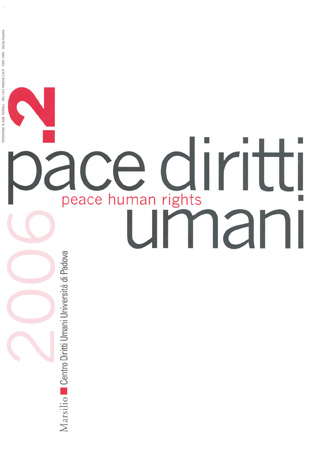Collections

Il disastro di Chernobyl e le iniziative internazionali per la sicurezza nucleare. Parte prima: l’incidente
- Contained in
- Pace diritti umani - Peace Human Rights, 2/2006
- Pubblication type
- Articolo / Saggio
- Pages
- 21-45
- Language
- IT
The Chernobyl Disaster and International Initiatives for Nuclear Safety. Part One: The Accident
Alessandro Pascolini
On 26 April 1986, the Ukrainian Chernobyl nuclear power station suffered a major accident which was followed by a prolonged release to the atmosphere of large quantities of radioactive substances, resulting in one of the worst technological catastrophes of last century. This had serious radiological, health and socio-economic consequences for the populations of Belarus, Ukraine and Russia, which still suffer from these consequences.
The national authorities countries were not ready to manage the accident, including a lack of information to the public. This had the effect of enhancing public apprehension all over the world on the risks associated with the use of nuclear energy and changed the public’s perception of technology in general. Goverments understood that a major nuclear accident has inevitable transboundary implications and its consequences could affect many countries even at large distances from the accident site. This led to an effort to expand international co-operation in areas such as communication, harmonisation of emergency management criteria and co-ordination of protective actions. These aspects will be considered in the second part of this paper. The first part is devoted to a presentation of the causes and consequences of the accident. The peculiarities of the reactor are first described, stressing its safety problems. The sequence of events leading to the final catastrophe are presented, from the inadequately planned experiment carried out to the actions taken by the operators, deviating from established safety procedures. This course of actions was compounded by the existence of significant drawbacks in the reactor design which made the plant potentially unstable and easily susceptible to loss of control in case of operational errors. The combination of these factors provoked a sudden and uncontrollable power surge which resulted in violent explosions and almost total destruction of the reactor. The consequences of this catastrophic event were further worsened by the graphite moderator fire that contributed to a widespread and prolonged release of radioactive materials to the environment.
The scale and severity of the Chernobyl accident had not been foreseen and the intervention criteria and procedures existing in most countries were not adequate. In addition, early in the course of the accident there was little information available and considerable political pressure. Within the territory of the former Soviet Union, short-term countermeasures were massive and, in general, reasonably timely and effective. However, difficulties emerged when the authorities tried to establish criteria for the management of the contaminated areas on the long term and the associated relocation of large groups of population. The consequences of the disaster have been monitored by international agencies. The Chernobyl Forum has recently produced its authoritative report. The health impact of the Chernobyl accident can be described in terms of acute health effects (death, severe health impairment), late health effects (cancers), and social/accident effects that may affect health. The acute health effects occurred among the plant personnel and the persons who intervened in the emergency phase. As far as the late health effects are concerned, an increase of cancer incidence is foreseen, reaching some 3% in the most contaminated regions.
According to present epidemiological knowledge, the increase of cancer deaths in the whole world population can reach 24.000, over the tens of millions foreseen for other causes. The impact of the accident on agricultural practices, food production and use and other aspects of the environment has been and continue to be much more widespread than the direct health impact on humans. There are potential residual risks, due to the conditions of the concrete structure, known as the «sarcophagus», which encases the destroyed reactor. Additional standing potential risks are the very large quantities of radioactive wastes and contaminated equipment which are currently stored in about 800 sites around the reactor. The lessons that could be learned from the Chernobyl accident encompassed all areas, including reactor safety and severe accident management, intervention criteria, emergency procedures, communication, medical treatment of irradiated persons, monitoring methods, radioecological processes, land and agricultural management, and public information.

